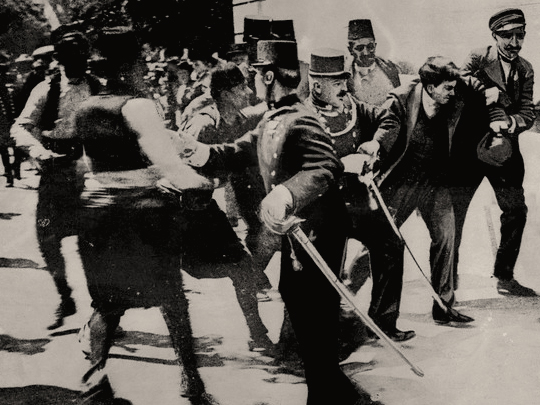Wikimedia Commons / CC-BY-SA-3.0 / GFDL
1 – Austrian Archduke Franz Ferdinand Assassinated
The assassination of Archduke Franz Ferdinand of Austria, heir to the Austro-Hungarian throne, and his wife Sophie, Duchess of Hohenberg, occurred on 28 June 1914, in Sarajevo, when they were shot by Gavrilo Princip.
It is widely acknowledged as the event that sparked the outbreak of World War I.
Franz Ferdinand and Sophie were touring Sarajevo in an open car when Serbian nationalist Nedjelko Cabrinovic threw a bomb at their car. It rolled off the back of the vehicle, wounding an officer and some bystanders.
Later in the day, the archduke’s procession took a wrong turn at the junction of Appel Quay and Franz Josef Strasse, where 19-year-old Princip had been lurking.
As the driver stopped to turn the car, Princip seized his opportunity and fired into the car from point-blank range. He then turned the gun on himself but was prevented from firing by a bystander, who threw himself upon the assassin.
An angry mob attacked Princip, who fought back and was subsequently wrestled away by the police. Meanwhile, Franz Ferdinand and Sophie lay fatally wounded in their limousine. They both died within the hour.
Austro-Hungarian authorities arrested and prosecuted the Sarajevo assassins, with one exception, who had escaped to Montenegro.
The assassins, together with the agents and peasants who had assisted them, received sentences ranging from death to 3 years in prison. In total, 20 men received sentences, while 9 defendants were acquitted.
2 – World War I Begins
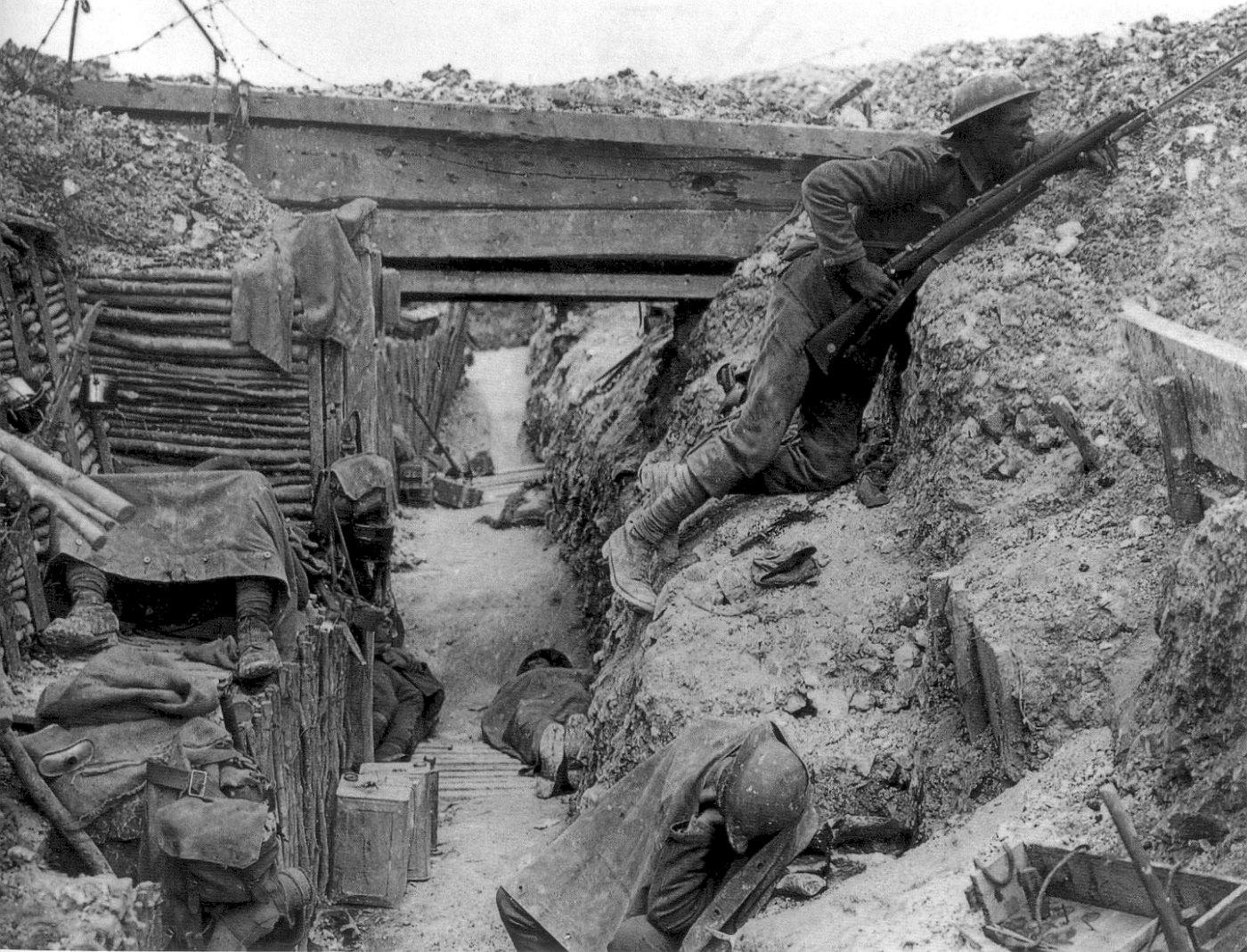
The first World War was a global war originating in Europe that lasted from 28 July 1914 to 11 November 1918.
More than 70 million military personnel were mobilized in one of the largest wars in history. Over 9 million soldiers and 7 million civilians died during the war (including genocides).
The trigger for the war was the assassination of Archduke Franz Ferdinand of Austria on 28 June 1914. Within weeks, the major powers were at war and the conflict soon spread around the world.
It was one of the deadliest conflicts in history and paved the way for major political change, including revolutions in many of the nations involved.
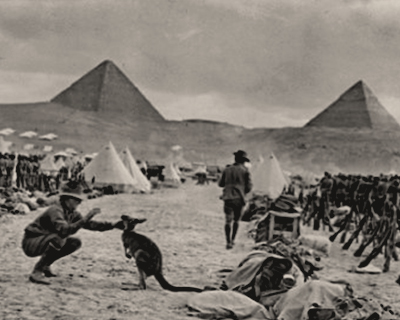
The world’s great economic powers assembled into two opposing alliances. The Allies (the British Empire, France, and the Russian Empire) versus the Central Powers (Germany and Austria-Hungary).
These alliances were reorganized and expanded as more nations entered the war.
Italy, Japan, and the United States joined the Allies, while the Ottoman Empire and Bulgaria joined the Central Powers.
3 – Babe Ruth’s First Professional Game
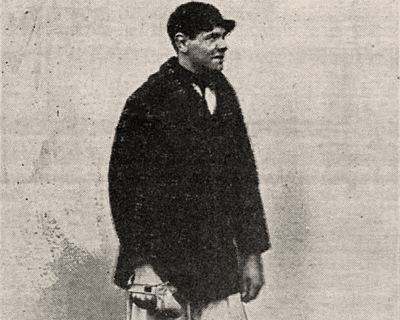
Before the 1914 season started, Ruth, a 19-year-old Baltimore schoolboy, was signed by Jack Dunn, manager of the minor league Baltimore Orioles. Teammates called him “Jack’s newest Babe,” and the nickname stuck.
In July, Dunn sold the ‘Babe’ to the Boston Red Sox of the American League.
Ruth arrived in Boston on the morning of July 11, 1914, and that afternoon was the starting pitcher against the Cleveland Naps.
The New York Times wrote the following day, “Ruth, formerly of Baltimore, made his debut as a local pitcher and held Cleveland to five scattered hits in the first six innings.” Boston went on to win 4-3, with Ruth picking up the win.
Ruth went on to become a Baseball great, hero-worshipped, an idol to millions of sports fans in America and beyond.
4 – Christmas Truce on the Battlefields of WWI between British and German Troops
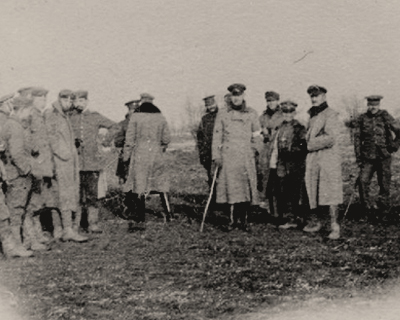
The Christmas truce was a series of widespread, but unofficial, ceasefires along the Western Front around Christmas 1914.
In the week leading up to the holiday, German and British soldiers crossed trenches to talk and exchange seasons greetings.
Men from both sides ventured into no man’s land on Christmas Eve and Christmas Day to mingle and exchange food and souvenirs.
There were joint burial ceremonies and prisoner swaps, while several meetings ended in carol-singing. Men also played games of football with one another.
Peace was not ubiquitous, however, and fighting continued in some areas, while in other areas the sides settled on nothing more than an arrangement to recover bodies.
The truce was a symbolic moment of peace and humanity amidst one of the most violent events in human history.
The events of the truce are depicted in the 2005 film, Joyeux Noel.
